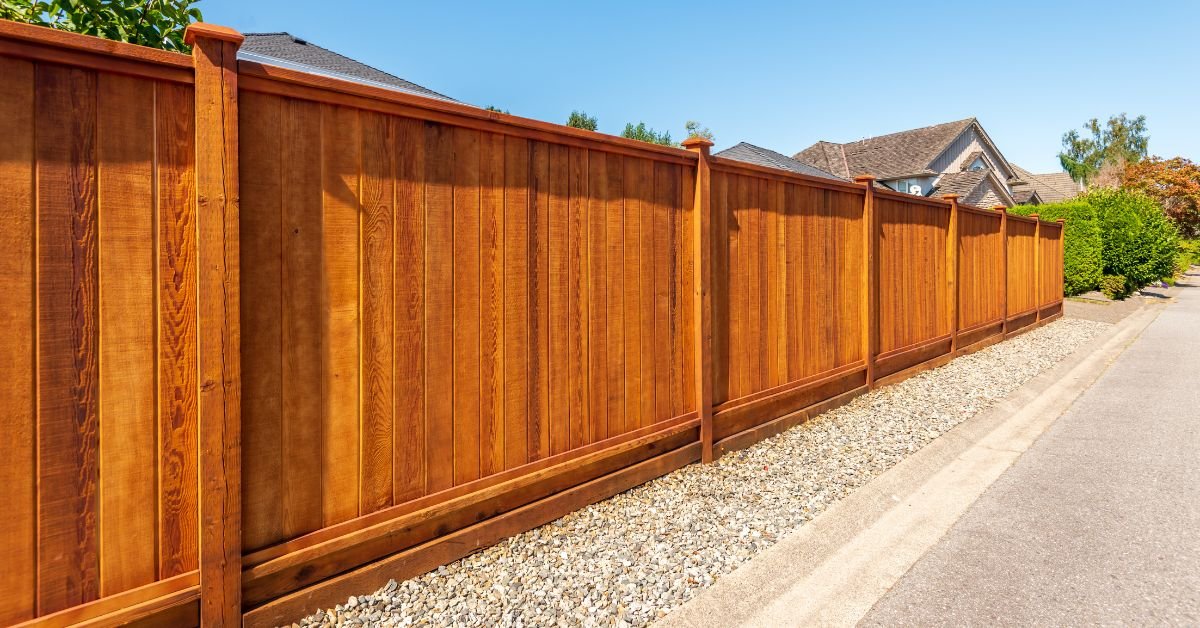All Categories
Featured

Whether it's solid winds, rainfall, snow, or intense heat, climate problems can progressively weaken your fencing, leading to costly repair work or substitute. There are numerous actions you can take to shield your fencing from weather-related damages and extend its lifespan.
- Pick the Right Material. The kind of product your fence is made from plays a significant function in just how well it will withstand climate condition. Some materials are normally more immune to damages than others. :
Wood Fencings: While traditional and gorgeous, timber can be susceptible to dampness, rot, and insects. Nevertheless, pressure-treated wood or cedar can offer better resistance to these problems. Vinyl Fences: Vinyl is extremely immune to dampness, rot, and pests. It additionally stands up well to extreme sunlight and heavy rain. Metal Fences: Wrought iron or aluminum fencings are resilient and can endure a range of weather problems. They can, nevertheless, struggle with corrosion gradually, specifically if not correctly covered. Composite Fences: Made from a mixture of timber fibers and plastic, composite fencings are more immune to weather-related damage contrasted to standard wood fencings. Choosing the ideal material for your area's environment is the very first step in safeguarding your fencing from weather condition damage.
- Seal or Stain Wooden Fences. Wooden fences are particularly at risk to damage from wetness, UV rays, and temperature fluctuations. One of one of the most reliable methods to protect your wood fencing is by using a protective sealant or discolor. These items help:
Avoid Water Damages: Sealants create a waterproof obstacle, protecting against moisture from leaking into the wood and triggering rot, mildew, or mold. Secure Against UV Damage: A good tarnish or sealant will certainly additionally obstruct damaging UV rays from the sun, which can create wood to dry out, split, and tarnish gradually. Preserve the Fence's Appearance: Normal discoloration assists keep the natural charm of the timber and expands its life expectancy. It's suggested to reapply the discolor or sealant every 1-- 2 years to maintain your surround good problem.
- Install a Barrier for Wind Defense. Strong winds can trigger substantial damage to your fencing, specifically if it is high or weak. Wind can flex or damage wooden panels, loosen fencing messages, or also trigger the entire fencing to collapse. Mounting a windbreak-- such as growing hedges, bushes, or mounting a mesh barrier-- can aid protect your fencing from high winds.
In addition, you can enhance the blog posts with concrete or metal braces to offer extra stability and stop leaning or shifting.
- Trim Overhanging Branches. Dropping branches can break panels or damage the fencing articles, leading to expensive repairs. Keeping the branches cut back minimizes the danger of branches damaging off and triggering damage to the fencing.
- Regular Assessments and Maintenance. Executing routine upkeep and inspections is key to catching prospective issues before they intensify. After a hefty storm, inspect your fence for any kind of indications of damage, such as loosened panels, leaning articles, or busted sections. Dealing with small concerns prior to they end up being larger ones can help extend the life of your fencing.
In addition, cleaning your fencing periodically to eliminate dirt, mold and mildew, or particles can assist protect its look and stability. For wooden fencings, carefully pressure clean the surface to get rid of built-up gunk, and for vinyl fencings, make use of a light cleaning agent to cleanse any kind of stains.

- Make Sure Proper Drainage. Water damage is one of the most typical weather-related issues that influence fencings. Poor drain can lead to standing water around your fence posts, which can trigger the messages to rot or compromise over time.
- Use a Safety Covering to Steel Fences. Steel fencings, such as those made from iron or steel, are highly resilient yet can be vulnerable to corrosion otherwise appropriately maintained. Applying a protective covering or paint that is especially designed for steel can aid stop rust and corrosion. Be sure to examine the fence periodically for any signs of corrosion, and address it promptly by fining sand and painting the impacted locations.

Final thought. Your fence is an important investment, and securing it from weather-related damages will certainly help guarantee that it continues to offer its function for several years to come. By choosing the right materials, consistently maintaining your fencing, and taking actions to safeguard it from the components, you can minimize weather-related damages and extend its life expectancy. Whether you're taking care of solid winds, heavy rain, or the harsh sun, these basic steps can go a long method in preserving the condition and look of your fencing, saving you time and money in the long run.
Latest Posts
Affordable Deluxe: Discover the Conveniences of Laminate Floor Covering
Published Apr 20, 25
1 min read
Get Your Car Fixed Fast - Book an Appointment with Montclare Auto Repair Hassle-Free
Published Apr 20, 25
2 min read
Streamline Your Funds with WyHy's Coinstar Service
Published Apr 20, 25
1 min read
More
Latest Posts
Affordable Deluxe: Discover the Conveniences of Laminate Floor Covering
Published Apr 20, 25
1 min read
Get Your Car Fixed Fast - Book an Appointment with Montclare Auto Repair Hassle-Free
Published Apr 20, 25
2 min read
Streamline Your Funds with WyHy's Coinstar Service
Published Apr 20, 25
1 min read